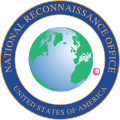| Aerospace Data Facility-Southwest | |
|---|---|
| Part of White Sands Missile Range | |
| Las Cruces, New Mexico | |
 | |
| Site information | |
| Type | Satellite ground station |
| Owner | United States Air Force |
| Controlled by | National Reconnaissance Office |
| Location | |
 | |
| Coordinates | 32°30′7″N106°36′39″W / 32.50194°N 106.61083°W |
Aerospace Data Facility-Southwest (ADF-SW) is one of three satellite ground stations operated by the National Reconnaissance Office (NRO) in the continental United States. Located within White Sands Missile Range in southern New Mexico, the facility is responsible for the command and control of reconnaissance satellites involved in the collection of intelligence information and for the dissemination of that intelligence to other U.S. government agencies. [1] [2] [3]

